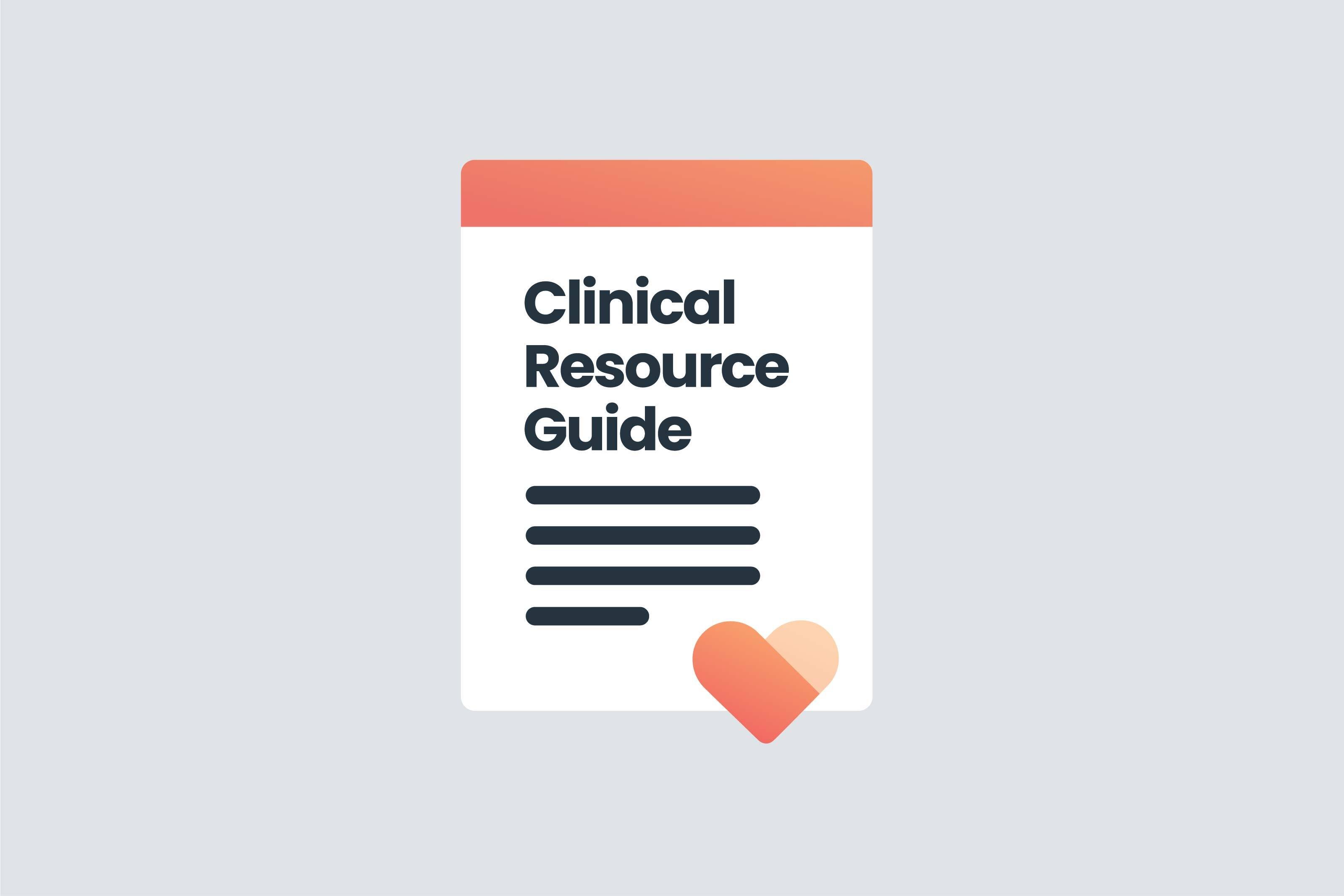Clinical Resource Guide: Ketamine
Ketamine is a rapid-acting general anesthetic drug that, due to new insight into its properties and mechanisms of action, is seeing increased use in...
5 min read
 Rebecca Christensen, PharmD
:
Jun 15, 2024 12:00:00 AM
Rebecca Christensen, PharmD
:
Jun 15, 2024 12:00:00 AM

Appetite stimulants are often considered for patients experiencing significant weight loss or anorexia related to their underlying terminal conditions.
INTRODUCTION TO APPETITE STIMULANTS IN THE HOSPICE SETTING
Cachexia, a common symptom in advanced cancer, chronic obstructive pulmonary disease (COPD), heart failure, and neurological diseases, is characterized by severe muscle wasting and a decrease in appetite that cannot be reversed by nutritional intake alone. Anorexia-cachexia syndrome affects both physical well-being and psychological health, as patients and their families may struggle with the emotional distress of not eating and persistent weight loss.
Appetite stimulants may be considered in an attempt to increase food intake and potentially improve the patient’s quality of life. However, it is important to emphasize that weight gain or the restoration of normal eating patterns is rarely achieved at this stage. It is also important to remember the focus in hospice care remains on improving comfort and addressing symptoms rather than reversing disease processes. With this in mind, the role of appetite stimulants must be reviewed for alignment with the goals of hospice, particularly when considering potential side effects and the realistic outcomes of treatment.
DETERMINING APPROPRIATENESS OF APPETITE STIMULANTS IN HOSPICE
Determining whether to initiate an appetite stimulant in hospice requires a thorough understanding of the patient’s clinical condition, prognosis, and personal goals. Generally, appetite stimulants may be trialed when there is a clear indication that improved appetite would contribute to the patient’s comfort or overall sense of well-being, and when the risks of the stimulant are minimal compared to the potential benefits.
For example, some patients experience significant distress from the sensation of not wanting to eat, despite a lack of hunger. Families may also experience distress when a loved one is not eating, as food intake is often associated with nurturing and survival. In these cases, an appetite stimulant might be considered to reduce psychological discomfort, even if it does not prolong life or result in substantial weight gain.
A trial of an appetite stimulant may also be appropriate when the patient has expressed a desire to eat more, especially if anorexia is causing significant weakness, fatigue, or a decrease in the ability to participate in activities that enhance quality of life. However, the decision should be individualized, considering factors such as the patient’s remaining life expectancy, potential side effects of the stimulant, and whether the medication aligns with the overall goal of comfort-focused care. If side effects outweigh benefits, discontinuation should be considered promptly.
EFFICACY OF APPETITE STIMULANTS IN THE HOSPICE SETTING
The use of appetite stimulants in hospice has been debated, particularly regarding their effectiveness in improving overall quality of life. Appetite stimulants may provide modest benefits in increasing appetite and promoting food intake, but these effects do not always translate to improved physical strength, weight gain, or survival.
In many cases, appetite stimulants can help alleviate distress related to the psychological burden of not eating, for both patients and families. A patient who can eat small amounts comfortably may feel more "normal," which can improve emotional well-being. Some patients report feeling more satisfied with meals or less anxious about the physical experience of anorexia when treated with appetite stimulants. Additionally, for families, the sight of a loved one eating—even minimally—may ease emotional suffering.
However, the potential benefits must be balanced against possible side effects, such as fluid retention, gastrointestinal discomfort, or increased risk of thromboembolism. In the hospice setting, where the primary aim is to enhance comfort, it is critical to ensure that appetite stimulants do not unintentionally cause harm or discomfort.
Moreover, research has shown that while appetite may improve with certain agents, weight gain is rarely achieved. This is because cachexia involves metabolic changes beyond simple anorexia, including the breakdown of muscle mass and altered metabolism, which appetite stimulants alone cannot reverse. Therefore, the impact on quality of life is most likely to be observed in the psychological and emotional domains rather than physical function or longevity
PHARMACOLOGIC APPETITE STIMULANTS
|
Drug |
Mechanism |
Adverse Reactions |
Initial Dosing |
Cost/ Month |
|
Megace® (megestrol acetate) |
Synthetic progestin; modulates hormones and reduces pro-inflammatory cytokines to increase appetite |
Fluid retention, increased risk of DVT, hypertension |
160-800mg QD |
$318 |
|
Zyprexa® (olanzapine) |
Atypical antipsychotic, increases appetite by antagonizing serotonin and dopamine receptors |
Dry mouth, orthostatic hypotension |
2.5mg daily |
$21 |
|
Remeron® (mirtazapine) |
Antidepressant that increases appetite by acting on serotonin and histamine receptors |
akathisia, restless leg syndrome, orthostatic hypotension, suicidal ideation |
15mg daily |
$27 |
|
Marinol® (dronabinol) |
Synthetic THC; acts on the endocannabinoid system to stimulate appetite |
Euphoria, paranoia, dizziness, dry mouth |
2.5mg BID |
$90 |
|
Decadron® (dexamethasone) |
Simulates cortisol resulting in improved appetite, increases motivation to eat |
Fluid retention, hyperglycemia |
4mg daily |
$29 |
|
Deltasone® (prednisone) |
10mg daily |
$11 |
||
|
Periactin® Cyproheptadine |
Antihistamine and serotonin antagonism stimulate appetite |
Sedation, dizziness, dry mouth, |
4-8mg TID |
$25 |
The table below is intended to help guide the selection of the most appropriate appetite stimulant based on the patient’s symptoms, underlying conditions, and the desired outcomes in the hospice setting. Each choice considers both therapeutic benefits and the potential side effects relevant to end-of-life care.
SELECTING THE MOST APPROPRIATE APPETITE STIMULANT
|
Condition/Symptom |
Appetite Stimulant |
Rationale for Use |
Additional Considerations |
|
Anorexia w/ depression or insomnia |
Mirtazapine |
Increases appetite and helps with mood and sleep disturbances |
Start with lower doses; sedation beneficial for patients w/insomnia |
|
Anorexia w/nausea or anxiety |
Olanzapine |
Improves appetite while decreasing nausea, anxiety or agitation |
Monitor sedation, and consider dosing in the evening to if pt drowsy with use |
|
Anorexia w/fatigue |
Corticosteroids |
Short-term use to improve appetite and energy levels |
Dose early in the day to avoid insomnia, |
NONPHARMACOLOGIC APPETITE STIMULATING TECHNIQUES
In addition to pharmacological interventions, nonpharmacological approaches can play an important role in improving appetite and enhancing the overall eating experience for hospice patients. These strategies are focused on comfort, maintaining a sense of normalcy, and reducing the psychological burden associated with food intake.
These nonpharmacological methods aim to make the act of eating less burdensome and more aligned with the patient’s comfort and preferences.
SUMMARY
Appetite stimulants can play a role in hospice care, primarily in alleviating the psychological and emotional burden of anorexia at the end of life. However, their use must be carefully considered, with attention to the patient's goals of care, the expected benefits, and potential side effects. While they may provide some improvement in appetite, they are unlikely to reverse cachexia or significantly alter the course of a terminal illness. The primary focus of hospice care remains on comfort, and the use of appetite stimulants should be approached with this goal in mind.
The decision to initiate an appetite stimulant should be based on an individualized assessment, considering factors such as patient distress, family concerns, and the impact of anorexia on quality of life. A careful balance between therapeutic benefits and the burden of side effects is essential. When used appropriately, appetite stimulants can offer modest relief, though their overall impact on quality of life may be limited to emotional well-being rather than physical improvements.
Hospice clinicians should remain vigilant in monitoring for adverse effects and be ready to discontinue treatment if the risks outweigh the benefits. Ultimately, the goal is to ensure that any intervention, including the use of appetite stimulants, aligns with the principles of hospice care—focusing on patient comfort, dignity, and peace at the end of life.
Resources:
Ketamine is a rapid-acting general anesthetic drug that, due to new insight into its properties and mechanisms of action, is seeing increased use in...

Seizure management can be challenging in any patient population, but especially in the hospice patient, who is often without IV access and in the...